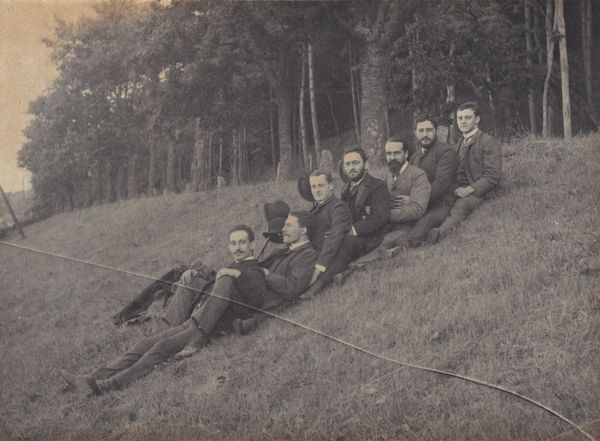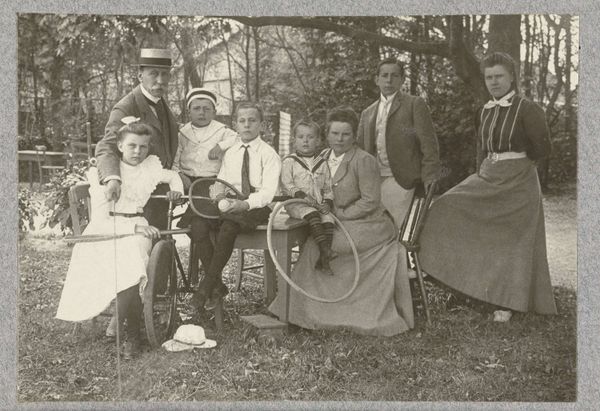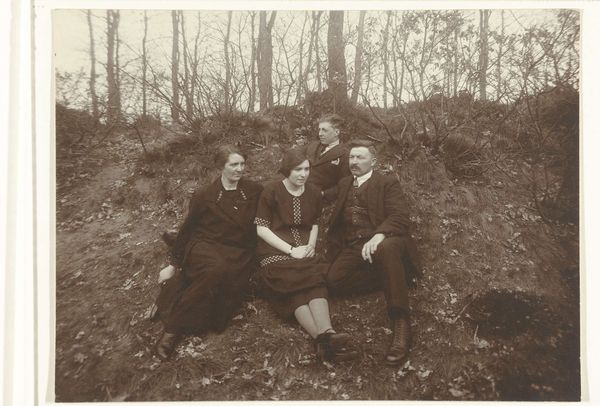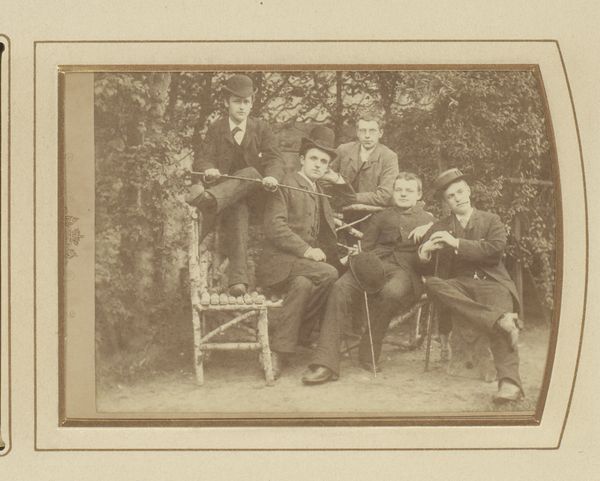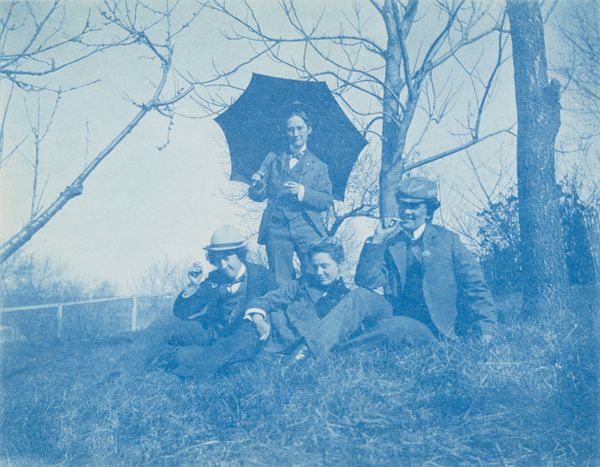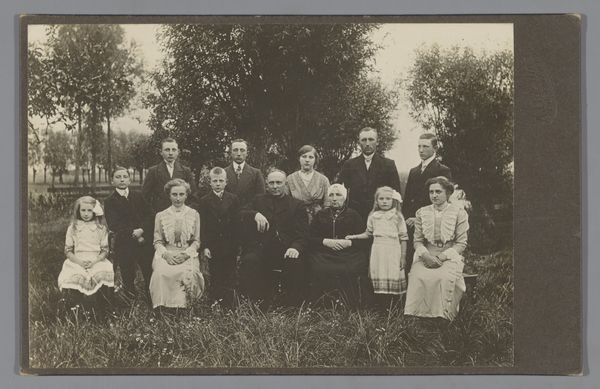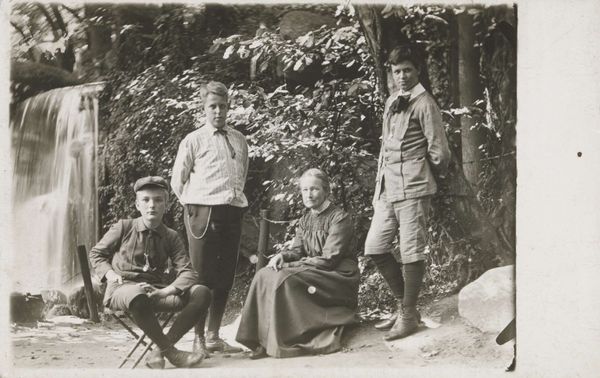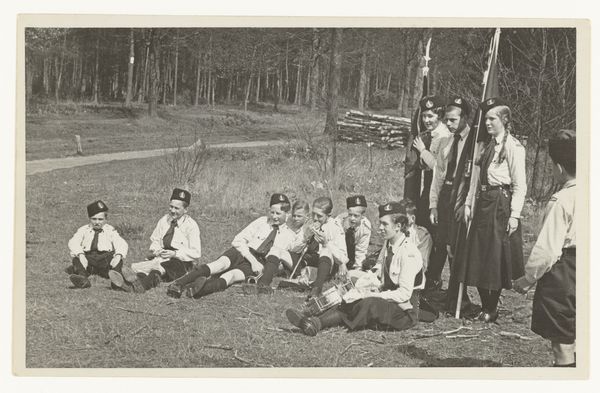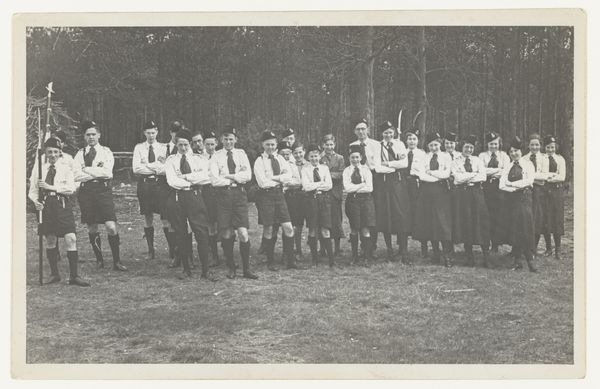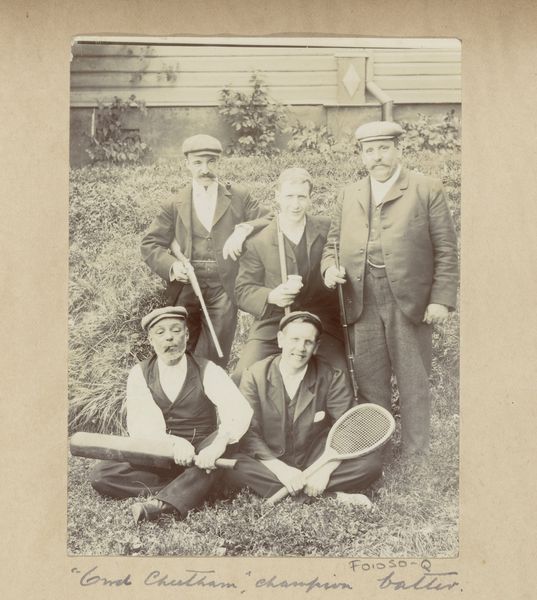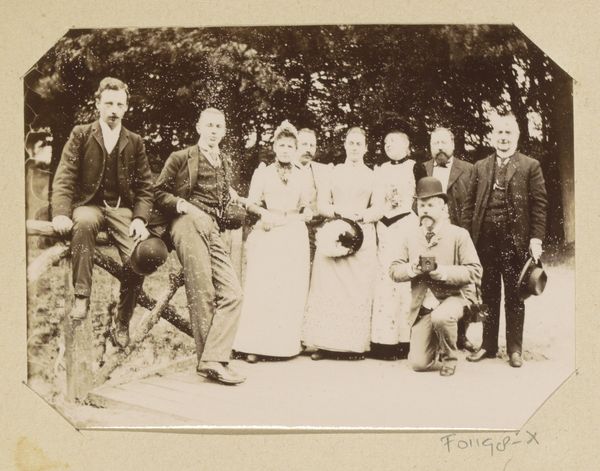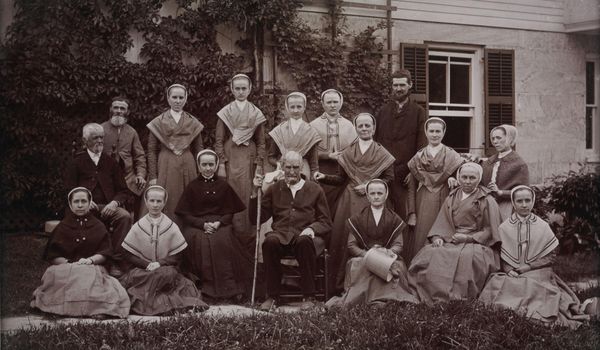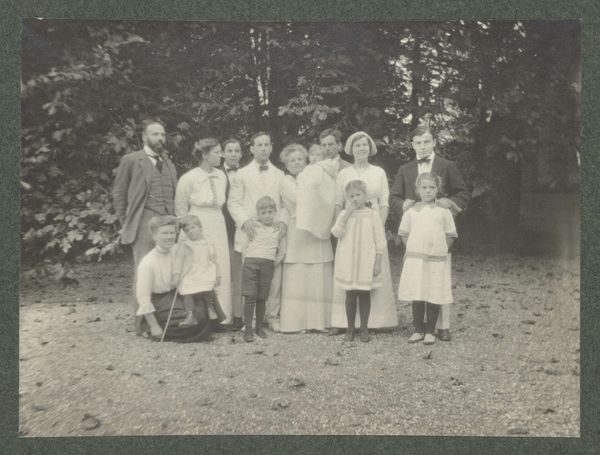
photography, gelatin-silver-print
#
portrait
#
16_19th-century
#
landscape
#
photography
#
historical photography
#
group-portraits
#
gelatin-silver-print
#
realism
Dimensions: sheet (trimmed to image): 9.8 x 14.1 cm (3 7/8 x 5 9/16 in.) page size: 13.6 x 22 cm (5 3/8 x 8 11/16 in.)
Copyright: National Gallery of Art: CC0 1.0
Curator: Let's turn our attention to this gelatin silver print entitled "Freienwalde a. O.," taken by Alfred Stieglitz in 1886. What's your initial take on this piece? Editor: There’s an interesting somber quality to this group portrait, almost staged yet the materiality conveys the impromptu nature of a gathering in nature. You feel the cool grass and weighty cloth of their suits. Curator: Indeed. Formally, the composition is quite striking. The figures, arranged casually on the grassy slope, create a sense of depth and visual interest. Notice how Stieglitz plays with light and shadow to sculpt the forms, particularly the faces. Editor: And what labour went into these suits, the tailored perfection against the earth from whence wool and dye are made. It challenges notions of luxury when contextualized on this very physical and ordinary ground. Curator: An interesting counterpoint. What fascinates me is the geometric arrangement of the figures against the backdrop of the trees, the careful consideration of spatial relationships. The use of tonality is remarkable. Editor: Speaking of tonality, the fact that it’s a gelatin silver print is key. Stieglitz had a certain level of chemical agency over his final work; he, like many photographers of the time, combined both the roles of artist and artisan. There is no factory removed. Curator: True, the choice of gelatin silver print speaks to a desire for sharpness and clarity. Consider how the textural quality enhances the formal elements. Editor: Absolutely. This wasn't a mere snapshot; it was a constructed view of a place and time, capturing both the subjects and his skill. I wonder how he saw his art fitting into a rapidly changing, industrialized world? Curator: His style places great importance on capturing candidness of moments while simultaneously emphasizing visual forms; one may surmise he wishes to bring art into lived experience. Editor: This work does make you consider that while form may live independent from worldly concerns, one may not say the same of artists who produce the work, nor their processes and motivations for making. Curator: That’s an insightful perspective. Ultimately, "Freienwalde a. O." demonstrates Stieglitz’s artistry within his technical processes. Editor: And for me, its beauty lies in the reminder that great art needs material to start from—and how those beginnings reflect a specific place and its processes.
Comments
No comments
Be the first to comment and join the conversation on the ultimate creative platform.
